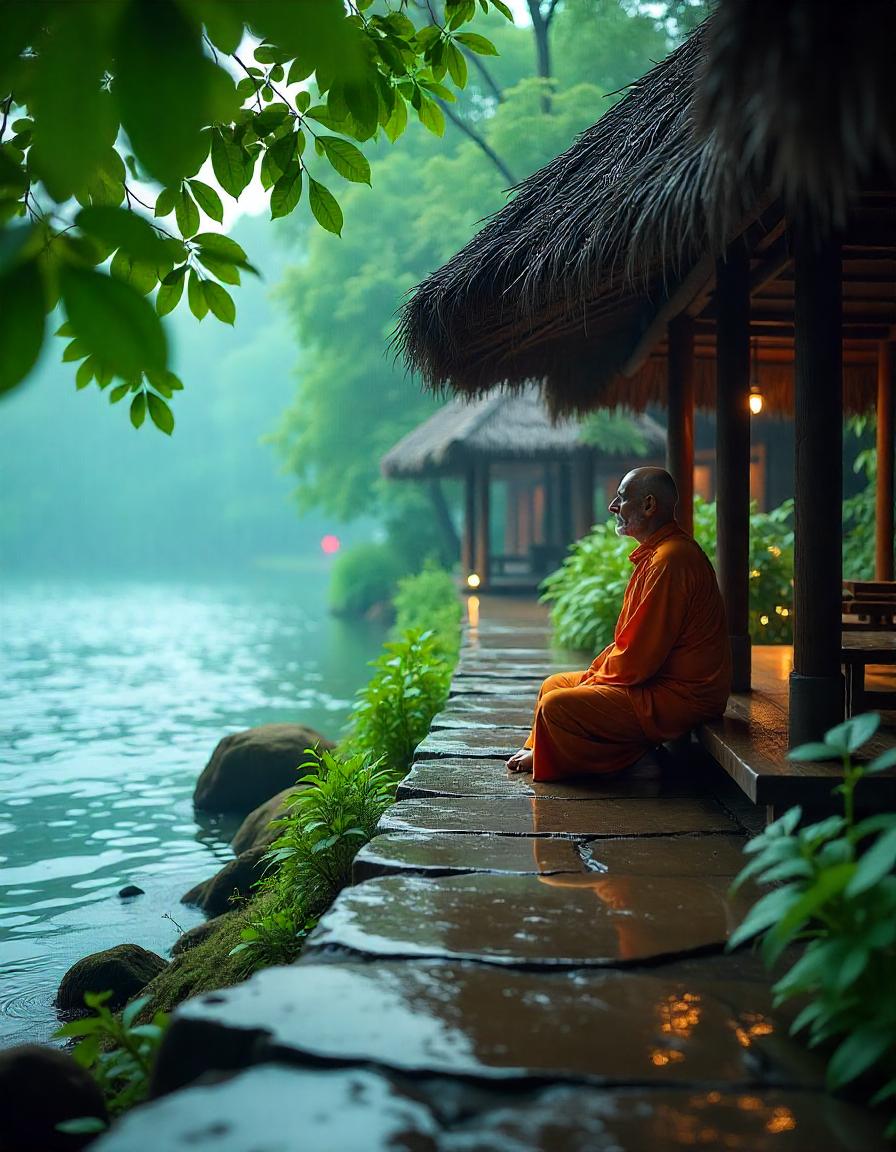
Spiritual meditation can be a transformative experience, but finding the right setting to deepen your practice can make all the difference. Imagine sitting beside a flowing river, the sound of water gently splashing against the banks, birds singing in the distance, and the air heavy with a sense of peace. This is the kind of environment you can find at many river ghats in India—places that have long been revered for their spiritual significance. But how exactly can you make the most of these serene spots for your own meditation practice?
The Power of River Ghats for Spiritual Connection
River ghats, especially in places like Varanasi, Haridwar, and Rishikesh, have been the heart of spiritual rituals for centuries. They’re often associated with purification, both physical and mental. These ghats, where people come to bathe, pray, or meditate, are steeped in centuries-old traditions, making them more than just picturesque locations; they are sacred spaces that can enhance your meditation experience.
The natural energy of the river, combined with the cultural and historical significance, creates a unique environment for spiritual reflection. When you sit at a river ghat, it’s almost as if you’re tapping into something ancient—something much bigger than yourself. The flow of water symbolizes the flow of life, a powerful reminder of the impermanence of things. This connection with nature can make your meditation practice more grounded and profound.
Choosing the Right Ghat for Meditation
Not all ghats are created equal, and each one has its own energy. For example, the Triveni Ghat in Rishikesh is one of the most famous spots for spiritual seekers. It’s a place where you can find a lot of peace and serenity, perfect for introspection. If you’re looking for a more peaceful experience, consider early mornings when the crowds are smaller and the air feels even more tranquil.
And let’s be real: the vibe around a ghat can make or break your meditation session. While some ghats are bustling with people performing rituals, others offer a quieter, more contemplative space. The key is to pick one that resonates with your current state of mind. If you need energy and inspiration, go for a busy ghat. But if it’s calm and solitude you seek, head to a quieter spot.
Why Water Is Key to Meditation at the Ghats
Water is often seen as a purifying element, both in physical and spiritual contexts. The constant movement of the river water can symbolize the flow of thoughts and emotions during meditation. Just like the water moves through the ghat, you can visualize your thoughts flowing away, leaving your mind clear and focused.
When I visited the Chaurasi Kutia Beatles Ashram near Rishikesh, I noticed how the sound of the Ganga River flowing through the region seemed to sync with my breath, enhancing my meditation. The rhythmic sound of the water created a natural, soothing backdrop that made it easier for me to focus.
This natural flow can help guide you into a state of mindfulness. The sound of the river can help drown out distractions and create a soundscape that’s ideal for deep concentration.
How to Meditate by the River
Here are some simple steps to help you get the most out of your meditation practice by the river:
Find Your Spot: Settle into a place where you feel comfortable, whether it’s near the water or a little further away to avoid distraction. The goal is to find a spot that feels peaceful and calm.
Connect with Nature: Close your eyes and take a few deep breaths. Feel the breeze on your face and listen to the sounds around you. Inhale deeply and let the fresh air fill your lungs. Let go of any distractions and focus on the present moment.
Focus on the River: Start by simply observing the flow of the river. Watch how it moves, how the water interacts with rocks, and how it never stops. This can be a powerful visual aid in your meditation.
Use the River’s Rhythm: As you meditate, sync your breath with the rhythm of the flowing water. Inhale as the river moves towards you, and exhale as it flows away. This will help you create a natural rhythm with the water and feel more connected to the flow.
Let Go of Distractions: If your mind starts to wander, gently bring your focus back to the water or your breath. Don’t be hard on yourself—meditation is about allowing yourself to be in the present, without judgment.
Embrace Stillness: Once you’ve entered the flow of your practice, allow yourself to remain still, observing both the river and your inner world. Let the stillness settle into your body, and let your thoughts become as fluid and calm as the water.

Spiritual Benefits of River Meditation
Meditating near a river can have a profound spiritual effect. The practice encourages a sense of connection to something larger than yourself. The constant motion of the river reminds us that life is always flowing and changing, and we too must let go of our attachment to the past and move forward.
Rivers are often seen as spiritual symbols of purity, renewal, and transformation. The act of sitting by a river ghat allows you to tap into these elements and experience a deep sense of inner peace. Over time, regular meditation at river ghats can lead to a more balanced mind, better emotional health, and a heightened sense of spiritual awareness.
Things to Do Near Triveni Ghat
If you’re near Triveni Ghat in Rishikesh, make sure to explore the surrounding area as well. Not only can you meditate by the river, but you can also attend the famous Ganga Aarti held every evening. The mesmerizing rituals, with the chanting of mantras and the offering of flames to the river, can deepen your sense of connection to the divine.
You can also visit nearby ashrams, like the Chaurasi Kutia Beatles Ashram, where the peaceful environment and history of spiritual seekers like the Beatles add a unique touch to your experience. There’s something magical about walking in the footsteps of those who sought enlightenment in these very places.
In Conclusion
Meditating by a river ghat can provide a deeply transformative experience. The natural surroundings, coupled with the spiritual significance of these sacred spaces, make them ideal spots for reflection and growth. By connecting with the flowing water, you can allow your mind to find peace, let go of distractions, and experience a sense of renewal. Whether you’re a beginner or an experienced practitioner, river ghats offer a perfect environment to deepen your meditation practice. So, the next time you find yourself by a river, take a moment to sit, breathe, and connect with the flow of life around you.

Hi there colleagues, nice post and good arguments commented here, I
am in fact enjoying by these.